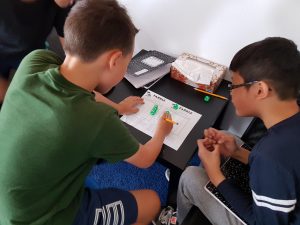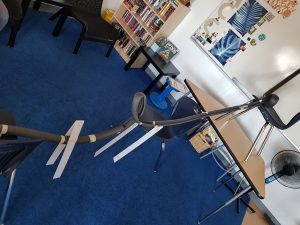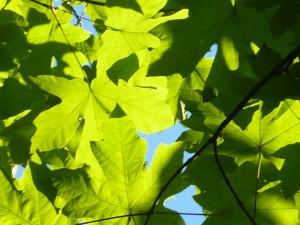Hello Everyone!
We have been gradually unpacking our unit and getting used to our permanent weekly schedule! It was great to meet everyone’s parents last week, and I look forward to another interesting week ahead! Here’s a quick update of what we are doing!
Science:
How do designers use scientific knowledge to make things? We are investigating the states of matter, energy and Newton’s laws, and other physics phenomena that a designer may take into mind when creating a structure.
- With our rumblebots, we investigated energy transfer through vibrations, and we watched a video to learn how they travel down the track!
- We used slinky toys to look at compression waves and how energy travels. Watch the slinky challenge here, and the answer to the challenge at this site.
- We used ramps and marbles to talk about how Newton’s first law and how gravity, height, and friction affect a moving object.
- We watched Bill Nye’s video on Structure, which everyone seemed to enjoy, during which he emphasized FORM FOLLOWS FUNCTION!
- We began to create pendulums in a new lab and will follow up on that this week.
- You can read more on Newton’s Laws here, or look up the three laws on many other websites! We will discuss them further this week.
How is anatomy structure of an organism designed to serve the organism’s function?
- While in the gym, we asked how the skeleton and parts of the body help us to be the mobile humans we are!
- We looked at a poster of the human skeleton and talked about the functions of each structure. Why do we look the way we do?
- We then went through a large visual book of animal skeletons and tried to guess the animals’ names just by looking at their bone structure. We determined that bone structures depend on animal behaviour, habitat, size, food, and predators. Everyone was asked to think about an animal they can look at more closely for its skeletal structure.
Math:
We are continuing to look at the structure of mathematics and our number system!
- Through Stanford University’s elementary school resources called YouCubed, we completed activities on brain crossing and visual representations of numbers related to multiples/factors/primes, observing patterns (such as Fibonacci and Pascal), and the skills needed for mathematics, such as being a skeptic or a convincer! Skeptics are important, because they ask the important questions that keep developing our mathematical knowledge!
- As a follow up to YouCubed’s visual representation of numbers, we looked at the first 20 numbers out of the 101 coded ones in the game Prime Climb. Using the initial 20, students were asked to form their own coloured versions of the numbers 21-40. We all figured out the code had to do with primes, multiples, and factors!
- Then, we played the game in groups! If you don’t know the game Prime Climb, check it out. The objective is to reach the number 101 with two pawns, and to do it, you have to use four operations and strategy to be the first home! This was a great example of how games are fun ways to review and to learn math concepts.
- More of YouCubed, Prime Climb, and other games and math questions this week!
Socials:
So far we have been talking about hierarchy of how the world is broken down. More coming this week as we talk about the structure of our world, country, province, etc. and of our neighbourhood. If we were creating a society, what would we need? How would it be structured?
Class Meeting:
Speaking of how a place is structured, the way we introduce new ideas and discuss the ways to make student proposals happen is through class meeting! Thank you to those students who volunteered to be meeting leader and note taker the last two weeks. So far, we have a Halloween Party Committee formed! We will have class meeting on Wednesdays if you have ideas you would like the class to consider! If you want something to happen, speak up, or make a written proposal for the agenda before we start a meeting! Our next discussion we will decide as a class if we are going to do Caribou Math this year.
Library:
Don’t forget to bring your library books every Wednesday so you can check out new ones! Wednesday is our permanent library day.
Personal Awareness Competency:
During this unit we are focusing on the core competency of Personal Awareness. We read about the competency on Thursday last week. Some key words that we talked about were responsibility, taking care of yourself, advocating for yourself, resilience, goals, well-being, and balanced. You can read about the competency here!
We had a discussion and game about the Comfort Circle and in our journals began to identify characteristics of our own personal comfort zone, learning zone, and panic zone. We talked about how knowing your comfort zone “place” in your mind is helpful, because you can imagine that place when you are stressed.
E-Portfolios:
Everyone received their E-Portfolios after we assigned all of the iPads to specific students and discussed digital citizenship. Please be careful to not share your passwords! You can access your e-port here, and Mom and Dad have passwords now to view your work, as well.
We will use the e-portfolios to make specific entries about our work. Please only put in an entry when assigned one by Ms. D. When I put questions on the board, please do add them to the post, so Mom and Dad can know the questions you are responding to! So far we have two entries! Go check them out!
Also, for more information on what we are doing in class, don’t forget to check out Ms. D’s Twitter feed, as I try to put up quick photos of our daily adventures there.
Language Arts:
More coming soon on language arts this week, but so far we have done some warm-up writing in our journals and engaged in daily reflections about our learning. We have also reviewed basic parts of speech through fun Mad Libs, and we will spend time on sentence and paragraph structure this term! In reading, we will focus mainly on reading non-fiction carefully, both by underlining key words and taking clear notes. We also have a Reading Around the World Program that I hope everyone will participate in this year as you do your 20 minutes of reading every night! Prizes for those who complete continents and a yummy lunch for anyone who completes the whole thing! Good luck!
Okay, more to come, but…..
Too much for one entry, but more to come this week as we engage in more experiments, build some things, introduce the idea of Skill Share, meet new gerbils (yes, new gerbils!), do some fun research, and more!
Have a great week and don’t forget Terry Fox Run on Thursday!
Ms. D



